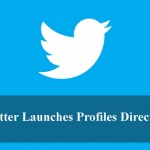
San Francisco — Amid all the funny laughing babies and keyboard-playing kittens, YouTube has also become a favorite hub to well-financed, professionally produced Original Channels backed by the site itself. Now, keeping in line with the project unfurled last October in the US by parent company Google, YouTube late last week announced that it is expanding its original programming initiative into Europe with the addition of 60 new video channels with content from Britain, France, Germany, and the United States.
The Google-owned video-sharing hub has intensified its assault on traditional TV by launching around 60 new channels featuring broadcast-quality content made by top producers, adding to the 100 it launched just about a year ago.
However, YouTube’s global initiative is part of the Original Channels project launched last October in the US, which will roll out in France and Germany and U.K. markets as well as the United States.

“A lot has happened since we announced nearly 100 new original channels coming to YouTube: 7-year-old Ruby taught Amy Poehler about feminism, Rainn Wilson interviewed Deepak Chopra in the back of a mysterious van, and Phil DeFranco’s SourceFed became one of the hottest comedy news shows on the Web or TV,” wrote Robert Kyncl, VP and global head of content, in a blog post announcing the new channels. “What do all these moments have in common? They are being created for you on YouTube.”
The Google-owned video website has kick-started the project by signing up American TV channels such as CNN, MTV and ESPN. Besides, this latest round of channel update includes British media companies such as Hat Trick, All3Media and ITN, which also include the Jamie Oliver Food Channel, BBC Worldwide’s On Earth and Mixmag TV.
According to Kyncl, the top 25 original channels are now attaining more than a million views every week, and 800 million users are watching 4 billion hours every month, up from 3 billion hours earlier this year. In addition, the number of subscribers has doubled, and content partners are reaching the 100,000-subscriber mark five times faster than two years ago.
Elaborating further he said, “From local cuisine, health and wellness and parenting to sports, music, comedy, animation and news, this new lineup of original channels will have something for everyone,” Kyncl, wrote in a blog post. “They are backed by some of the biggest producers, well-known celebrities and emerging media companies from Europe and the U.S.”

Jamie Oliver: set to launch a YouTube channel in the UK. Photograph: Amy Sussman/Getty Images for Justin Vineyards
On the other hand, ITN Productions has created a channel called Truthloader, featuring reports from citizen journalists, and Grazia magazine and Gravity Road has produced Fashtag, with fashion features live from London’s Carnaby Street.
Describing the slow progress of the project, the company said: “The discovery for us was that though some partners were making successful businesses out of creating content on YouTube, though it was not happening at the scale or the pace that we would love to see it happening, or as widely in terms of genre,” said Ben McOwen Wilson, director of YouTube for Europe, the Middle East and Africa.
Google had apparently invested $100m to launch the first 100 channels in October 2011, out of which the company claims, 25 channels are raking in more than a million views a week. Next on the sights for YouTube’s Original Channel program are Germany and France, before the company hopes to rope in other European and Asian media producers and broadcasters.
Among other things, the new channels will include programming from Britain’s BBC; Endemol, the Dutch company behind the Big Brother reality show; and FreemantleMedia, an arm of Germany’s Bertelsmann, which makes American Idol, according to a report from the Associated Press. Some other offerings include Grantland, sports programming from ESPN; JASH, comedy by Sarah Silverman and Michael Cera; the nature channel On Earth from BBC Worldwide; comedies Bad Teeth and HuHa as well as Guinness World Records: OMG and The Jamie Oliver Food Channel.
However, YouTube’s original channels can be viewed for free. YouTube sells ads and takes its initial investment out of that revenue, according to the New York Times. Specific ad revenues were not revealed.


